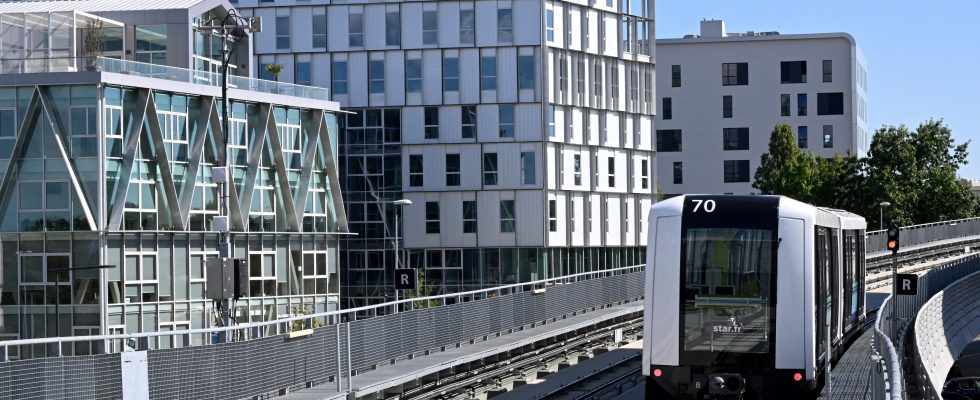On October 25, 1989, the Rennes metro was officially born: led by the socialist Edmond Hervé, recently re-elected, the municipal council voted in principle after heated discussions. Twenty-one years after the inauguration of its first line, a few months after the opening of the second, last September, the metro is (almost) no longer debated. Necessity is law: the “archipelago city” needs him.
The archipelago city? We owe the concept to the town planner and long-time deputy mayor, Jean-Yves Chapuis*. Consider a metropolis made up of small and medium-sized communities distributed within what Marc Hervé, the son of the former mayor, municipal councilor (PS) and successor to Jean-Yves Chapuis in town planning, calls “the agro-natural space: fields, woods, forests…” Around the city of Rennes, which is its heart, 78% of the some 70,000 hectares of the metropolis are green. The Rennais are the first beneficiaries. “Place de la mairie, you are ten minutes from the great outdoors by bike”, explains Marc Hervé.
The bike, the other priority. To access the green belt, but also to connect them and open up the different “islands” of the archipelago, the little queen is essential. “Because the morphology of our territory goes hand in hand with efficient mobility, we will have built 100 kilometers of express bike network by the end of our mandate, and 500 by 2030”, rejoices the town planning assistant. 80% of the 462,000 inhabitants of the metropolis should have access to it before the end of the decade. With its two metro lines, buses, zones 30 and… “the civic and courteous behavior” of the people of Rennes, it is to this cycling system that the city owes having been distinguished in a report produced by Adetec on trips to major cities on behalf of the association Qualité Mobilité.
“It will create dissatisfaction”
And the car in all this? “Rennes has chosen not to extend beyond the ring road, analyzes Pierre Le Letty, of the House of consumption and the environment. The municipalities of the first and second crowns are therefore spread out.” Result: you have to take the car to access the city center and this creates serious traffic jams. “You have to go all out on public transport and cycling, advises Pierre Le Letty. But that will require a lot of money and create discontent.”
First of these disappointed, Charles Compagnon. Aware of being a “heretic”, the leader (Horizons) of the municipal opposition questions the Rennes model, first rebelling against “hyper-metropolisation and densification, which lead in particular to transform the avenues into ‘canyons of heat’. Cycle paths do not mean that we breathe well”. He is also worried about the future low emission zone (ZFE): “On the outskirts, the cars are old. With the ZFE, we will create a metropolis that excludes.” On the subject, Marc Hervé is not far from sharing his opinion. “We will be very attentive to its effects, he assures. Under the guise of ecological ambitions, we should not deny ourselves on the social question.”
Among the projects of the Rennes municipality, the demolition of the Vilaine car park, near the town hall, could give back to its residents the river covered by its concrete slab. The many motorists who use it are already moved by it. Adding access restrictions to the city center for polluting vehicles would upset them even more. To the point of having to sacrifice the ZFE on the altar of the archipelago city?
* Rennes, the Archipelago City (ed. of Aube).
This article is taken from the special issue “Energy transition: let’s invest together!” available on newsstands June 29.
